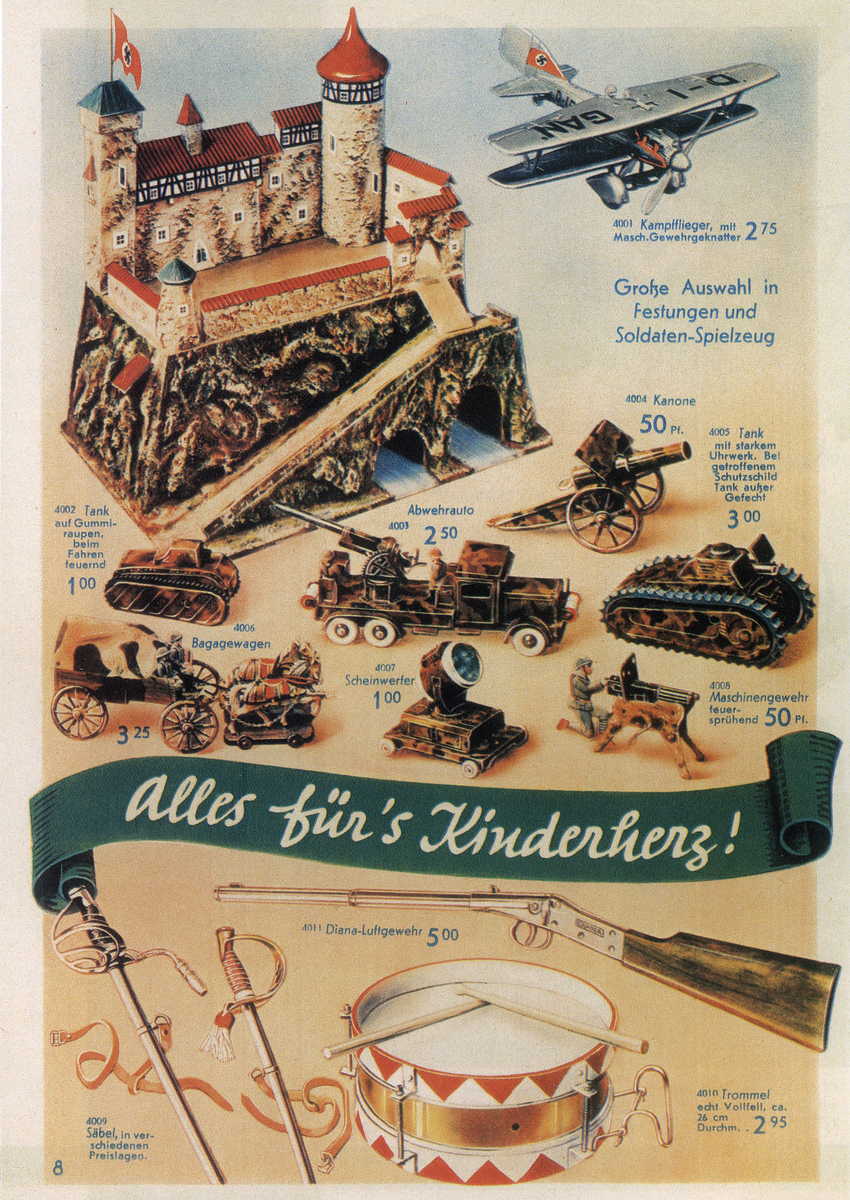Source

Source: Kaufhof department store Christmas catalog, 1935, p. 8. Reprinted in Judith and Rita Breuer, eds., Von wegen Heilige Nacht. Das Weihnachtsfest in der politischen Propaganda. Mühlheim an der Ruhr: Verlag an der Ruhr, 2000.
As the regime worked to convert the economy to war production, imagery and artifacts that glorified war and militarism increased in frequency in the everyday cultural life of Nazi Germany. One significant example of this change was the manner in which holidays were co-opted to promote a militaristic agenda. A nationwide campaign at the end of 1935 called for a “Christmas in Uniform”—an attempt to link the Christmas holiday with a sense of national duty. That year, Germany had also reinstated conscription, and so the holiday campaign served to normalize military service for the entire population. Even children’s toys underwent a change during the period, as toy soldiers, military vehicles and toy weapons grew in availability in comparison to non-military toys. This advertisement from the Kaufhof department store Christmas catalogue of 1935 informed parents of the store’s “Great selection of fortresses and military toys: everything a child’s heart desires” and shows the way in which these kinds of toys were promoted around the holidays.

Source: Kaufhof department store Christmas catalog, 1935, p. 8. Reprinted in Judith and Rita Breuer, eds., Von wegen Heilige Nacht. Das Weihnachtsfest in der politischen Propaganda. Mühlheim an der Ruhr: Verlag an der Ruhr, 2000.